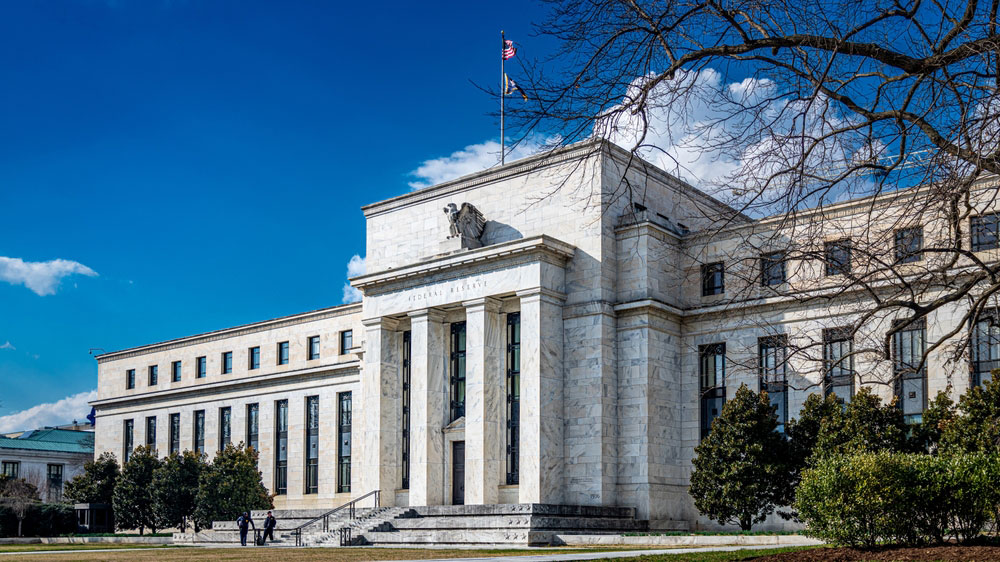The Geopolitical Financial War

U.S. bonds, stocks, and the dollar are all declining simultaneously, a situation so concerning that the Federal Reserve has openly stated it has the means to address it. Normally, capital moves between stocks and bonds in opposite directions; when equities fall, bonds rise. A simultaneous selloff across all major U.S. assets often signals one thing: a flight from dollar-denominated assets.
This is not driven solely by tariffs. Our tracking-based analysis picked up early signs around the 2025 Munich Security Conference (MSC). Since December of last year, the U.S. bond market has bee on a steady decline. The yield on the 10-year Treasury began rising from around 4.15%, gradually pushing it to a 14-month high. At one point, the 10-year Treasury yield reached 4.791%. After JD Vance publicly highlighted the tensions between the U.S. and Europe at the MSC, the market has developed to the current state where the focus in the Treasury market has shifted to whether the 10-year yield will break through the 5% threshold.
The rise in U.S. Treasury yields proves that demand for the U.S. Treasuries is decreasing and liquidity is worsening. Yields typically move inversely to the price of bond assets, so the rise in yields and their sustained high levels indicate that U.S. Treasury assets are being ignored. As the buying price keeps dropping, bond assets are becoming cheaper. In fact, the exchange rates of all G10 currencies are rising, while the dollar is depreciating against them. Data from April shows that the depreciation has reached about 0.9%. This situation is almost unbelievable, signaling that many countries, led by European investors, have lost confidence in dollar assets.
This shift of assets from the U.S. to Europe signifies a geopolitical financial war. The Trump administration is under pressure. Earlier this year, both Treasury auctions underperformed. Yields spiked, hedge funds cut positions, and global demand weakened, raising fears that countries might reduce U.S. debt holdings. Trump’s “reciprocal tariffs” are drawing criticism. Seema Shah, Chief Global Strategist at Principal Asset Management, said bond market volatility “struck a nerve with the Trump administration,” noting: “They (the Trump administration) have repeatedly emphasized their focus on bond yields and even celebrated last week when Treasury bond yields dipped below 4%…so the reversal in market trends (surging Treasury yields) undoubtedly caused significant concern in the White House”.
Trump’s dilemma isn’t primarily about China. Despite China being a major holder of U.S. debt, it accounts for only 11.8% of foreign-held U.S. debt and 2.77% of total U.S. debt, limiting its influence. The real conflict lies in the ideological divide between the U.S. and Europe. While Trump’s Republican win ended the U.S. electoral battle, Europe’s ideological struggle continues. This financial fight for global capital is at its core geopolitical. Whether Trump loses this war, abandons “reciprocal tariffs,” and cedes influence to Europe remains uncertain. The odds currently appear no better than fifty-fifty.
To prevail, Trump must act decisively. First, he could withdraw from the Ukraine conflict. A prolonged war would hurt Europe’s capital markets and redirect funds back to dollar assets. Second, Trump should stabilize the tariff war by reaffirming a 10% baseline tariff. Anything above that appears emotional and damaging. A predictable tariff policy could be justified internationally, with manageable supply chain impacts, and serve the Republican agenda by supporting manufacturing. Third, the Fed must take a more active role: increase Treasury purchases, boost dollar liquidity, and stabilize the dollar order. Raising gold prices would limit safe havens for outflowing capital. Potential rate cuts remain uncertain but are now under greater scrutiny.
Despite the pressure, Trump still holds leverage in this geopolitical financial war. U.S. Treasuries, though weakened, are still stronger than European or Japanese debt. Europe’s progressive forces may try to mislead markets and sway capital, but the U.S., as the most geographically and economically stable market, remains a cornerstone. After all, regardless of whether or not American manufacturing returns successfully, it will still be U.S. manufacturing, not Europe’s, and not Japan’s.
With all these in mind, figures like those from Wall Street, Larry Fink, and Ray Dalio may not necessarily be right. The U.S. might not actually lose this geopolitical financial war.
Have you read?
The World’s Best Medical Schools.
The World’s Best Universities.
The World’s Best International High Schools.
The World’s Best Business Schools.
The World’s Best Fashion Schools.
The World’s Best Hospitality And Hotel Management Schools.
Bring the best of the CEOWORLD magazine's global journalism to audiences in the United States and around the world. - Add CEOWORLD magazine to your Google News feed.
Follow CEOWORLD magazine headlines on: Google News, LinkedIn, Twitter, and Facebook.
Copyright 2025 The CEOWORLD magazine. All rights reserved. This material (and any extract from it) must not be copied, redistributed or placed on any website, without CEOWORLD magazine' prior written consent. For media queries, please contact: info@ceoworld.biz








